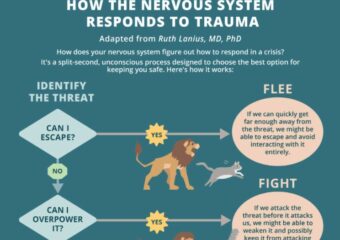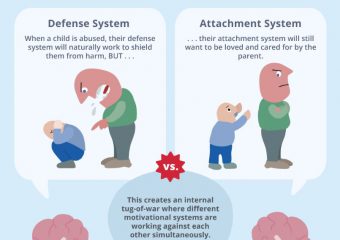It can often be difficult for trauma survivors to understand how or why they reacted a certain way during a traumatic experience. Instead of seeing their trauma response as the result of a split-second, unconscious decision made by their nervous system, your client may blame themself for not reacting differently. This can be especially true […]
[Infographic] How Trauma Can Affect Adult Relationships
Left untreated, childhood trauma can reverberate through adult relationships and make it difficult for your client to get close to other people. But Terry Real, MSW, LICSW has a way of thinking about the psyche that can help clients understand the aftereffects of trauma . . . . . . and help practitioners retarget their […]
[Infographic] How to Differentiate Between the Freeze and Shutdown Trauma Responses
The freeze and shutdown responses to trauma can resemble each other . . . . . . but they are very different in terms of what’s happening in your client’s brain, body, and nervous system. And that means they require different grounding strategies as well. In this infographic, we lay out some key cues to […]
[Infographic] Working with Structural Dissociation
One challenge of working with trauma is when a patient’s dissociated “parts” are operating independently . . . . . . or worse, they’re at odds with each other. This can be very distressing for the patient (and lead to a dysregulated nervous system). But the Structural Dissociation Model developed by Kathy Steele, MN, CS, […]
How COVID-19 Is Affecting Practitioners
A couple weeks ago, we asked how COVID-19 was affecting your practice . . . . . . and I thought you might like to know what we found out. But first, thank you to the hundreds of practitioners from across the globe who shared their experiences. This helps us better understand how we can […]




